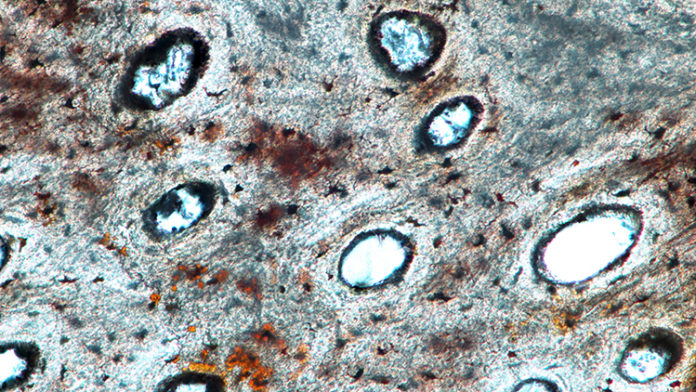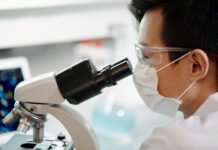Dinosaur fossils are more than just pieces of rock. Beyond revealing the shapes and structures of bones and teeth, researchers are now finding evidence of original biological material dating as far back as 195 million years ago.
Published this week in Nature Communications, this rare soft tissue find from the rib of Jurassic dinosaur Lufengosaurus is over 100 million years older than the previous oldest find in a late-Cretaceous Tyrannosaurus rex.
Corresponding author Robert Reisz, vertebrate paleontologist and professor of biology at the University of Toronto Mississauga, found traces of type I collagen, a fibrous protein found in cartilage, blood vessels, and other connective tissue. He credits a light-based method for detecting tiny amounts of biological material.
Reisz and collaborators at Taiwan’s National Synchrotron Radiation Research Center used high-power infrared light to probe for materials inside vascular canals, the areas of bone that housed nerves and blood vessels in the living animal. The wavelengths of light that bounced back gave signatures that identified the materials preserved inside the bone, one microscopic area at a time.
Previous methods required researchers to dissolve the rest of the fossil away before carrying out the analysis, which destroys the specimen and dilutes the material. The light-based approach is more sensitive and allowed Reisz to pinpoint the original location of each signal.
And in this case, location mattered. As it turns out, as dinosaur blood turned to stone, it may have helped protect the biological material around it. The vascular canals were filled with small hematite particles, an iron-rich mineral that likely formed from the iron-rich hemoglobin in the dinosaur’s blood. The areas in the surrounding fossil and rock were iron poor. The antibacterial properties of hematite may have helped preserve the collagen over vast geological time.
This new method is set to reveal molecular information that was previously invisible, and thought to be destroyed. There is more biological material preserved in fossils than was previously believed possible, and this opens up opportunities to better understand evolution and the biological relationships between long-extinct species.









































